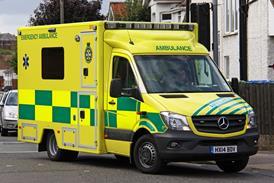The Integrator: The race to the neighbourhood NHS

Insider tales and must-read analysis on how integration is reshaping health and care systems, NHS providers, primary care, and commissioning. This week by deputy editor Dave West.
EXCLUSIVE PREMIUM CONTENT
If you have access to our premium Insights package, simply sign in here.

Sign up to our premium ‘Insights’ package to access this content
HSJ provides you with a clear and unbiased view of what’s happening now and what’s coming up, locally and nationally within the healthcare sector. Our premium ‘Insights’ package includes:
- All HSJ news by sector, topic & region
- Breaking News announcements
- App for mobile and offline reading
- Comment and Daily Insights newsletters
- Regional roundup newsletters
- Unrestricted access to ‘Ask HSJ’ - AI assistant
- 10 expert briefings every fortnight




















